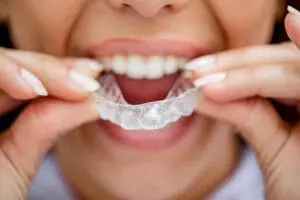Cognitive-Behavioral Therapy CBT has emerged as a valuable approach for addressing bruxism, the involuntary and often destructive habit of teeth grinding. Bruxism can lead to various dental and health issues, including worn-down teeth, jaw pain, headaches, and disrupted sleep. CBT, which is traditionally associated with addressing emotional and psychological concerns, can be a powerful tool in breaking the teeth-grinding habit by targeting the cognitive and behavioral aspects of this condition. CBT for bruxism begins with a thorough assessment by a trained therapist to identify the specific triggers and patterns of teeth grinding in an individual. This evaluation can help uncover any underlying stress, anxiety, or emotional factors that contribute to the habit. Once these triggers are identified, CBT aims to modify the thought processes and behaviors associated with bruxism. Cognitive restructuring is a key element of CBT, where individuals learn to recognize and challenge negative or irrational thought patterns related to their grinding habit.

For example, individuals may discover that their bruxism is exacerbated by stress or anxiety, and CBT helps them develop healthier ways of coping with these emotions. Furthermore, CBT introduces relaxation techniques and stress management strategies that can be instrumental in reducing bruxism. Progressive muscle relaxation, deep breathing exercises, and mindfulness practices are all part of the toolkit that CBT provides to help individuals manage stress and anxiety, which are often closely linked to teeth grinding. Behavioral components of CBT for bruxism involve habit-reversal techniques, which focus on replacing the grinding behavior with more constructive actions. For example, individuals are encouraged to become aware of when they grind their teeth and use a predetermined alternative behavior, such as clenching their jaw or taking a sip of water, loop dentistry as a replacement for grinding. Over time, these techniques can help individuals break the automatic habit of teeth grinding.
The use of biofeedback is another valuable component of CBT for bruxism. Through this method, individuals can gain awareness of their physiological responses and learn to control muscle tension and jaw clenching. Biofeedback devices can provide real-time information about muscle activity, enabling individuals to monitor and modulate their bruxism triggers. Lastly, CBT encourages individuals to maintain a journal to track their bruxism episodes and identify patterns over time. These self-monitoring helps individuals and their therapists assess progress and make necessary adjustments to their treatment plan. In summary, CBT for bruxism offers a holistic approach to addressing this often overlooked and potentially harmful habit. By targeting the cognitive and behavioral aspects of teeth grinding, individuals can gain a deeper understanding of their condition, develop effective coping strategies, and gradually replace the habit with healthier alternatives. With the guidance of a trained therapist, individuals can work towards a life free from the damaging effects of bruxism, leading to improved oral health, reduced discomfort, and a better quality of life.